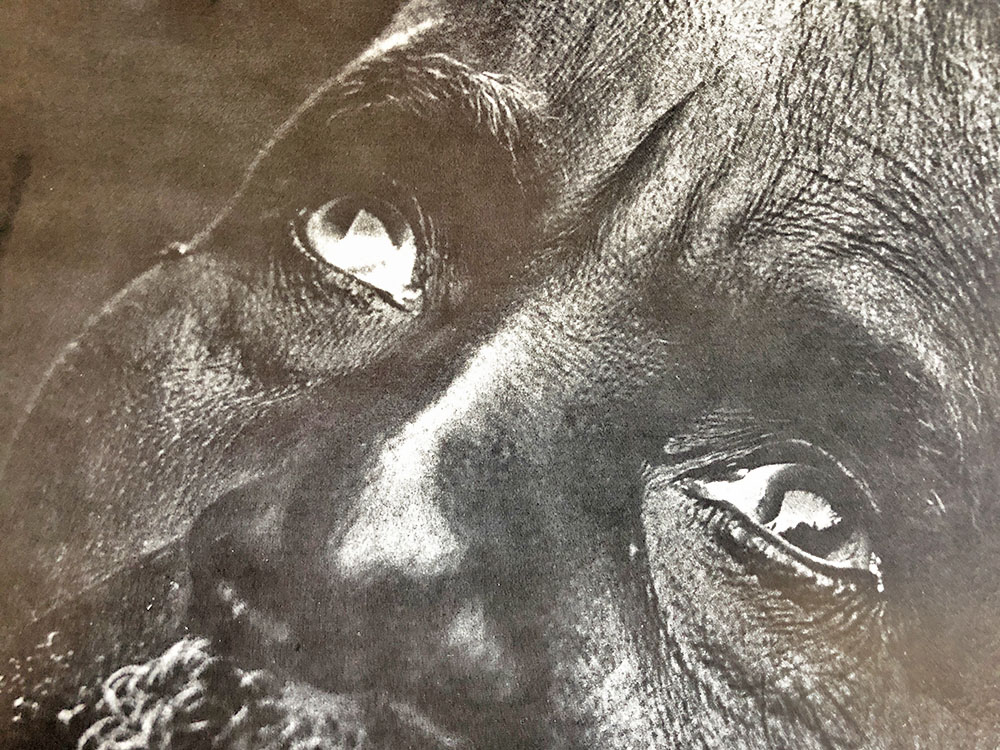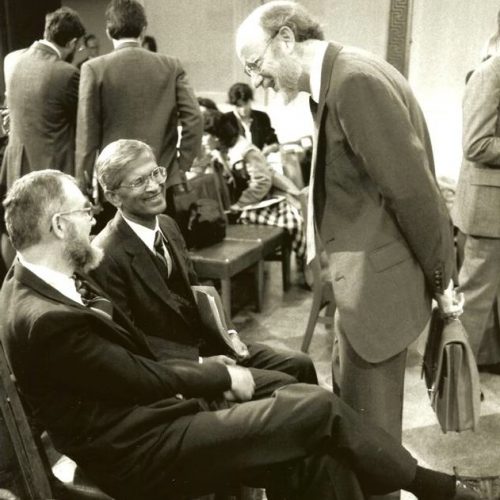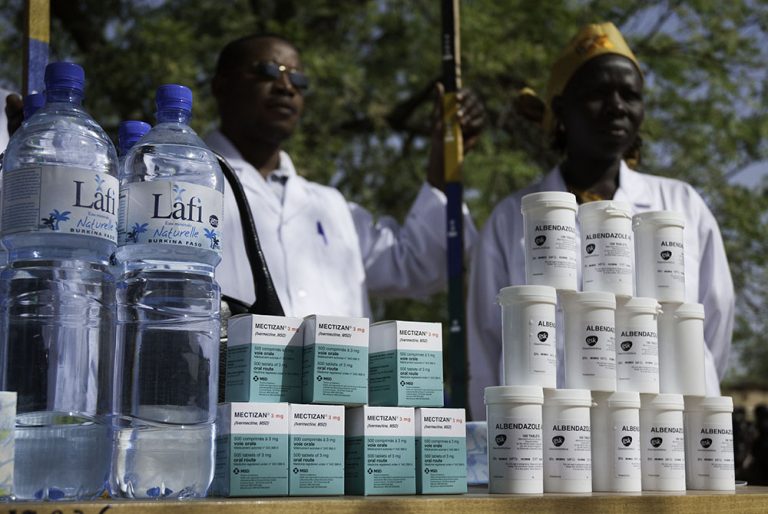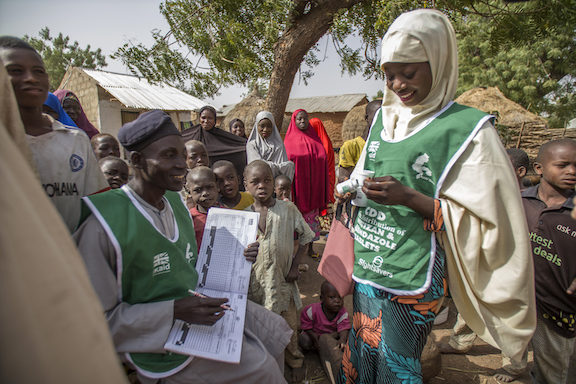Looking back on the last 30 years of the Mectizan Donation Program, I am proud of what we’ve accomplished together because it means that we have saved and improved the lives of millions of people living where the diseases are endemic.
- Kenneth C. Frazier, executive chairman of the board and former chief executive officer, Merck & Co., Inc.* (2017)
For centuries, river blindness (also known as onchocerciasis) plagued remote communities in Africa, Latin America, and Yemen. Before effective treatment was available, infection caused severe itching, visual impairment, and—ultimately—blindness. Communities abandoned farmlands in fertile areas because nearby rivers were home to the blackflies that transmit the disease. The only treatment was a medication that caused painful side-effects. Larvaciding the rivers was the only way to control the disease.


In the 1970s, Dr. William Campbell of Merck Research Laboratories suggested the use of ivermectin (later named Mectizan) for river blindness in humans. Following the breakthrough lab work by Dr. Campbell (who in 2015 was named a Nobel Laureate) and his team, another Merck researcher, Dr. Mohammed Aziz, championed the clinical development of Mectizan. In the 1980s, Dr. Aziz led the collaboration with the World Health Organization (WHO) to design and implement the trials in West Africa that proved the effectiveness of the drug against river blindness.
In 1987, Merck & Co., Inc., Rahway, N.J., U.S.A.* committed to donating Mectizan—as much as needed for as long as needed—with the goal to help control river blindness. Today, this unprecedented drug donation is helping to eliminate transmission of the disease—an unfathomable concept when Merck first donated Mectizan.
The decision to donate Mectizan introduced new challenges. Merck’s leadership recognized early on that getting the medicine to the people who needed it would be best accomplished through partnership. Because the disease affects the poorest of the poor living in remote communities, the health infrastructure in endemic countries was not sufficient to implement mass distributions that reached all those who needed treatment. New mechanisms and strategies were needed, and a range of scientific and programmatic expertise across stakeholders was required. Soon after the donation was announced, Merck established the Mectizan Donation Program (MDP or the Program) in partnership with The Task Force for Global Health, located in the United States in Atlanta, Georgia. MDP helped create a dedicated public-private partnership working to coordinate technical and operational activities among WHO and its regional offices, governmental and nongovernmental organizations, local communities, donors, research institutions, academia, and the private sector.
By 1998, a highly effective model had been established for mass drug administration (MDA). Building on success, Merck expanded its commitment to further donate Mectizan for lymphatic filariasis (LF, also known as elephantiasis) in African countries and Yemen where it co-exists with river blindness. For LF, Mectizan is administered with albendazole, a drug donated by GlaxoSmithKline (GSK). The two companies began working together to ensure Mectizan and albendazole distribution for LF elimination was successfully integrated with Mectizan distribution for river blindness.
Today, more than three decades later, four countries in the Americas (Colombia, Ecuador, Guatemala, and Mexico) have eliminated river blindness, and two countries in Africa (Malawi and Togo) as well as Yemen in the Middle East have eliminated LF. Other countries in Africa are making significant progress towards eliminating river blindness and LF. The WHO 2021-2030 Road Map for NTDs has set forth feasible goals for further victories.
MDP is the longest-running disease-specific drug donation program of its kind. The donation of Mectizan and the public-private partnership that resulted influenced other drug donation programs, leading to the development of a new sector of global health to address “neglected tropical diseases” (NTDs).


A community-directed treatment strategy used to distribute Mectizan (called “Community-Directed Treatment with Ivermectin,” or CTDI) was developed during the first decade of the Program; CDTI strengthens primary health care by training community-directed distributors (CDDs), and by enabling other health services to be provided in the rural communities where river blindness and LF are found.
The Program reaches more than 300 million people annually; over 11 billion Mectizan 3 mg tablets have been shipped to endemic countries by Merck since the inception of MDP in 1987.
In 2017, Merck expanded its commitment again by donating up to 100 million treatments annually through 2025 for LF elimination in countries eligible for a treatment strategy called “triple therapy” that will help accelerate LF elimination in certain settings. Also known as IDA, this strategy—recommended by WHO—uses the co-administration of ivermectin (Mectizan), diethylcarbamazine (DEC), and albendazole, which has been shown to be a very effective alternative strategy to accelerate elimination of transmission of LF.
*Merck & Co., Inc., Rahway, N.J., U.S.A., is known as MSD outside of the United States and Canada.
